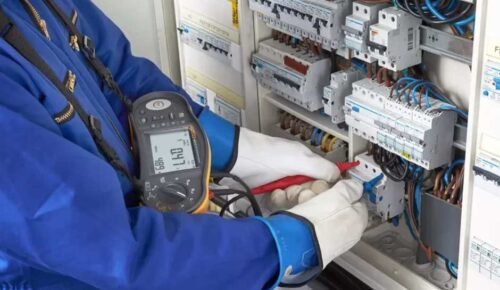In the ever-evolving landscape of modern warfare, the military relies heavily on advanced technology to maintain operational readiness and effectiveness. From the arid deserts of the Middle East to the icy expanses of the Arctic, military personnel face some of the harshest environments on the planet. To ensure that they remain effective in such conditions, the military employs rugged, military-grade technology designed to withstand extreme weather, rough handling, and other demanding conditions. This article explores how rugged technology is essential in keeping military forces operational in the most challenging environments.
The Importance of Rugged Technology
Rugged technology is crucial for the military because it ensures reliability and durability in environments where standard commercial devices would fail. Military operations demand equipment that can perform under stress, extreme temperatures, moisture, and physical shock. The ability to maintain communication, navigation, and data management is vital for mission success and personnel safety.
Durability and Reliability
One of the primary reasons rugged technology is indispensable in military operations is its durability. Devices such as rugged laptops, tablets, and communication equipment are built to military standards, often referred to as MIL-STD-810, which outlines the testing methods for determining the environmental worthiness and durability of a piece of equipment. These devices can survive drops, vibration, and exposure to dust and water, ensuring they function correctly when needed the most.
Enhanced Performance
Rugged devices are not just about durability; they also offer enhanced performance tailored to military needs. High-performance processors, secure communication capabilities, and long-lasting batteries are standard features. These enhancements ensure that military personnel can rely on their equipment to perform complex tasks, such as real-time data analysis and secure communications, without fear of malfunction.
Applications of Rugged Technology in the Military
Rugged technology is utilized across various military applications, each critical to maintaining operational efficiency and effectiveness.
Communication Systems
Reliable communication is the backbone of any military operation. Rugged communication systems, including radios, satellite phones, and mobile command centers, ensure that units can stay in contact even in remote or hostile environments. These systems are designed to function despite interference, physical shocks, and severe weather conditions.
Navigation and GPS
Accurate navigation is crucial for mission planning and execution. Rugged GPS devices and navigation systems provide precise location data, which is essential for coordinating movements and avoiding hazards. These devices are built to withstand extreme temperatures and physical stress, ensuring that soldiers can always find their way.
Data Management and Analysis
In modern warfare, data is as crucial as weaponry. Rugged laptops and tablets allow military personnel to collect, manage, and analyze data in real-time. These devices are equipped with secure storage solutions and encryption capabilities to protect sensitive information, even in the field.
Examples of Rugged Military Technology
Here are some examples of rugged technology that play a vital role in military operations:
- Rugged Laptops: These devices are built to survive drops, spills, and extreme temperatures, making them ideal for field use.
- Rugged Tablets: Offering high performance in a durable package, these tablets feature sunlight-readable displays and long battery life.
- Rugged Radios: Secure, reliable communication in all environments is essential for coordination and command.
- Rugged Cameras: Used for reconnaissance and intelligence gathering, these devices are designed to operate in extreme conditions and provide high-resolution images and video.
- Rugged Wearables: Devices like GPS watches and body-worn cameras enhance situational awareness and data collection capabilities, providing real-time information to personnel.
Overcoming Environmental Challenges
Rugged technology is specifically designed to withstand the environmental challenges that military personnel face. These devices are tested to endure extreme temperatures, from scorching heat to freezing cold, ensuring they remain operational in any climate. They are also built to resist dust, sand, and water, preventing damage from exposure to harsh elements.
Extreme Temperatures
Military operations can take place in environments with extreme temperatures, which can affect the performance of standard equipment. Rugged devices are designed to function in a wide temperature range, ensuring reliability whether in the heat of the desert or the cold of the Arctic.
Physical Shock and Vibration
The physical demands of military operations can subject equipment to significant shock and vibration. Rugged technology is built with reinforced casings and shock-absorbing materials to protect internal components from damage, ensuring devices remain functional even after being dropped or subjected to intense vibrations.
Water and Dust Resistance
Operations in dusty or wet environments require equipment that can withstand these conditions without failing. Rugged devices are often sealed to prevent dust ingress and are water-resistant, allowing them to function in heavy rain, through water crossings, or in sandy conditions without malfunctioning.
Supporting Mission-Critical Operations
Rugged technology supports mission-critical operations by providing reliable tools for communication, navigation, and data management. These capabilities are essential for maintaining operational effectiveness and ensuring the safety and success of military personnel.
Secure Communication
Secure and reliable communication is vital for coordinating military operations. Rugged communication devices are designed to provide clear and secure lines of communication, even in remote or hostile environments. This ensures that units can stay in contact, receive orders, and relay information without interruption.
Accurate Navigation
Rugged GPS devices and navigation systems provide military personnel with accurate location data, essential for mission planning and execution. These devices help avoid hazards, coordinate movements, and ensure that troops reach their destinations safely and efficiently.
Real-Time Data Analysis
In modern warfare, real-time data analysis is crucial for making informed decisions. Rugged laptops and tablets allow military personnel to collect, analyze, and share data quickly and securely, providing a tactical advantage on the battlefield.
Conclusion
Military-grade technology is an essential component of modern military operations, providing the durability, reliability, and performance needed to operate in harsh conditions. From secure communication systems to rugged laptops and GPS devices, this technology ensures that military personnel can perform their duties effectively, regardless of the environment. By investing in rugged technology, the military can maintain operational readiness, enhance mission success, and ensure the safety of its personnel.

























![490+ Funny Laptop Names [Cool & Op Ideas] 28 490+ Funny Laptop Names](https://namenestle.com/wp-content/uploads/2024/03/funny-laptop-names.webp)

































